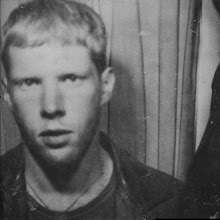Alva Noto - Haliod Xerrox Copy 11
Photocopying, or "xeroxing," is ubiquitous. It seems conventional today. Need a copy of a paper? - xerox it. And yet, the necessity of multiple hard copies of documents is quickly growing obsolete. Information is increasingly digital. Like this blog for instance - it's all electronic information - not a photocopied zine. But what is a copy? Is a copy exact to its original? If they are exact, is originality valid? Socrates held that physical objects are just a shadow of their "ideal" or "perfect" forms. Plato's theory of Forms continues this line by distinguishing material form versus the perfect capital 'F' Form. Physical form is just a copy, another addition to the original grandaddy concept of that Form. Your favorite coffee mug is just a form that is born from the ideal Form, the concept of a mug. A Form is a perfect object, but, for the most part, we just sense form - we know only copies.
Photocopying (aka Xerography or electrophotography) was developed by Chester Carlson in 1938. The Xerox company had been struggling for years in the development of a photocopier. But the company received a tremendous boon with the 1959 release of the Xerox 914.
Photocopying tends to deteriorate the quality of the image with each copy. Sound artist Carsten Nicolai aka Alva Noto attempted to test this deterioration of quality in the form of sound. From boomkat - "Together with Christoph Brünggel, Nicolai designed a 'sample transformer' which would take audio fragments and manipulate them beyond recognition, taking something familiar and de-familiarising it." Everyday samples (telephone hold music, jingles, light entertainment) and digital errors, old fashioned modem transfers, and fax tones were copied beyond recognition into a new sound. In my opinion, a beautiful new sound - a new form.
3.2.08
XEROXING
Posted by
P.J.S.
at
09:44
![]()
Labels: modern music, science, thought
Subscribe to:
Post Comments (Atom)


No comments:
Post a Comment